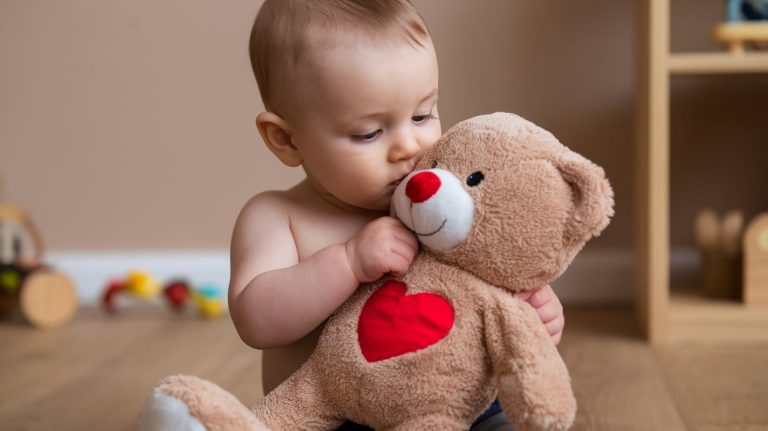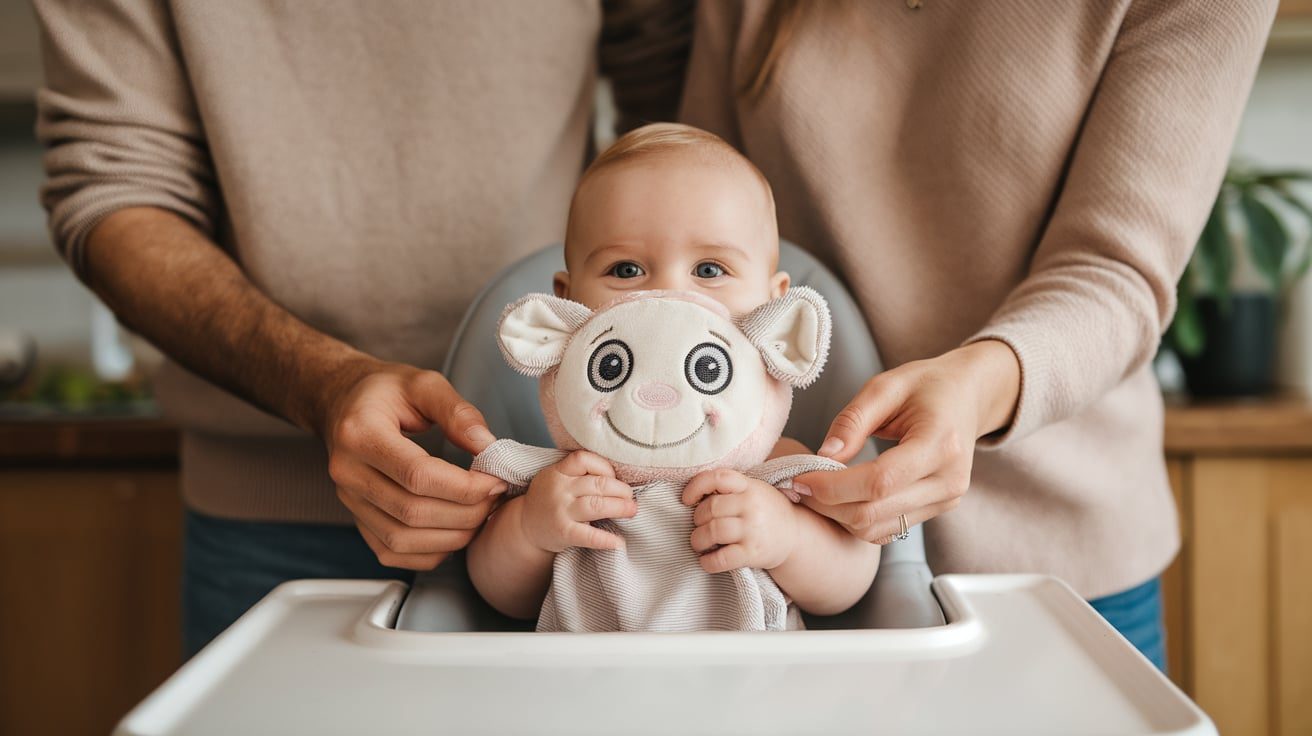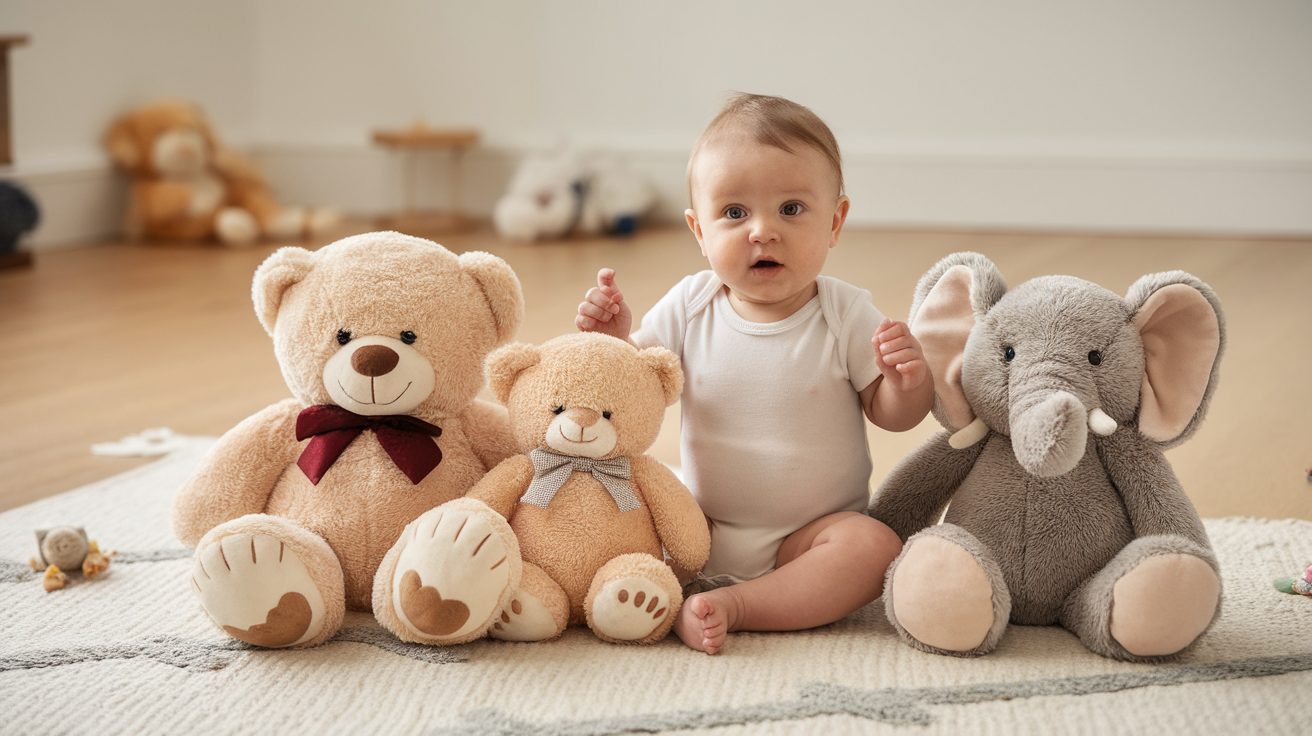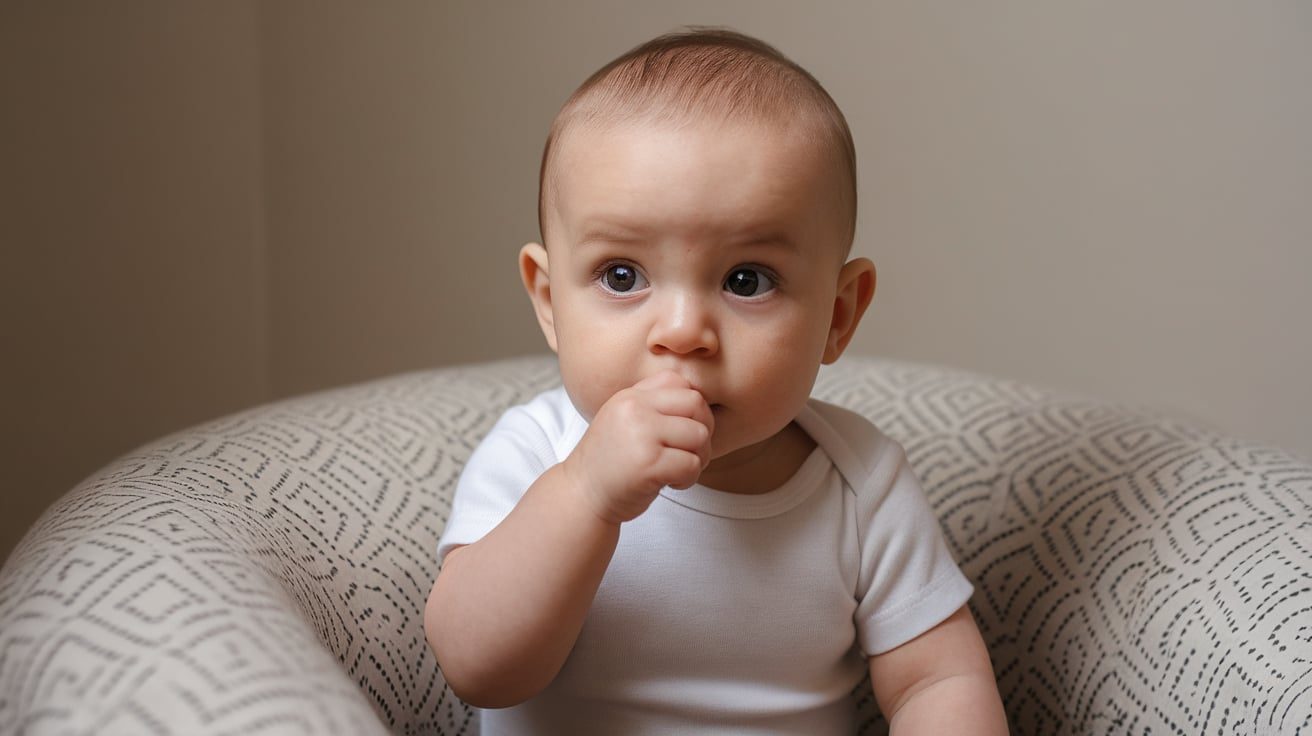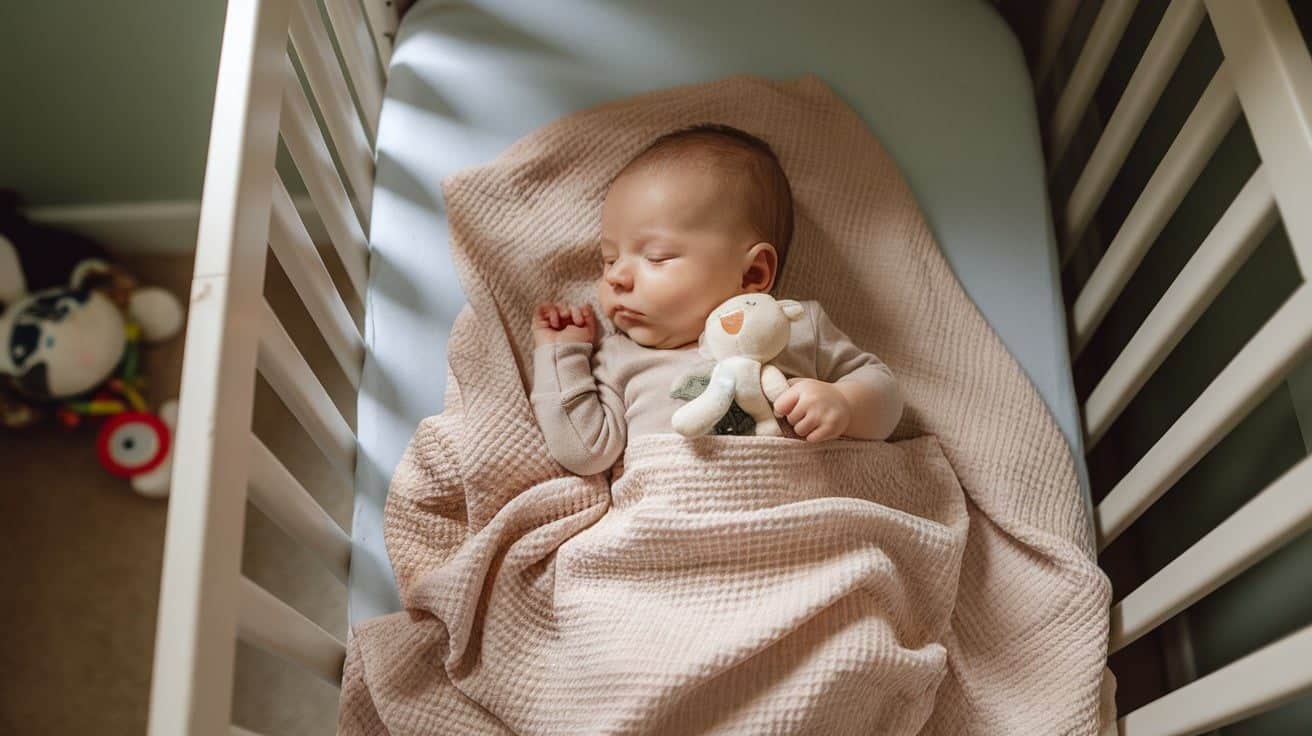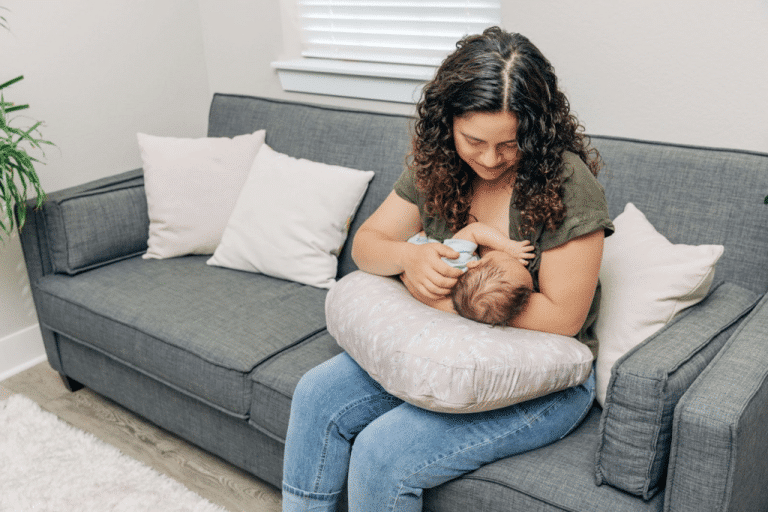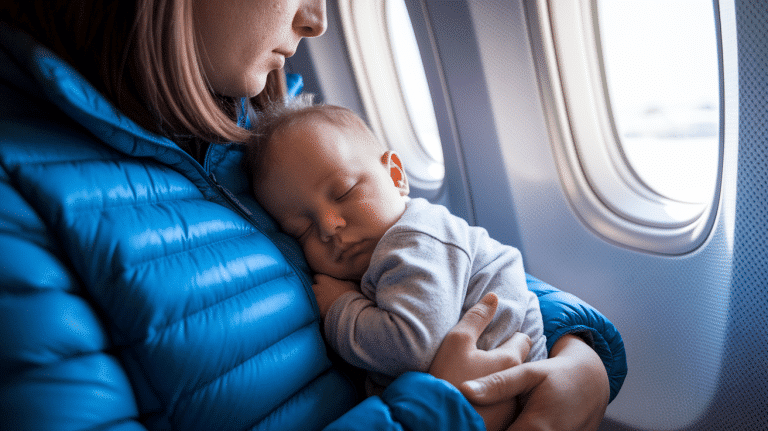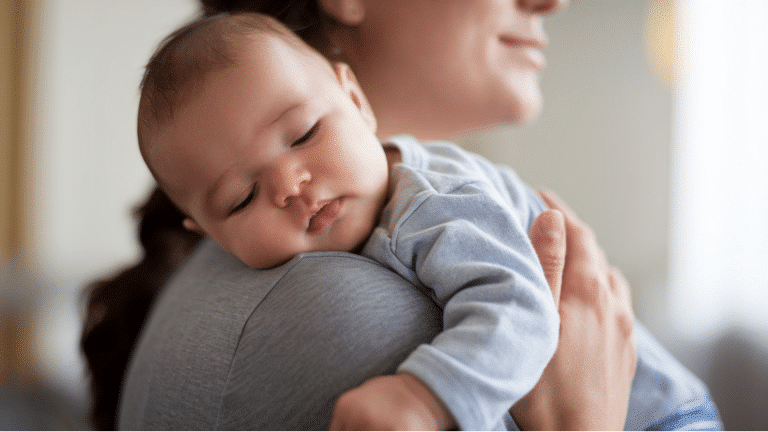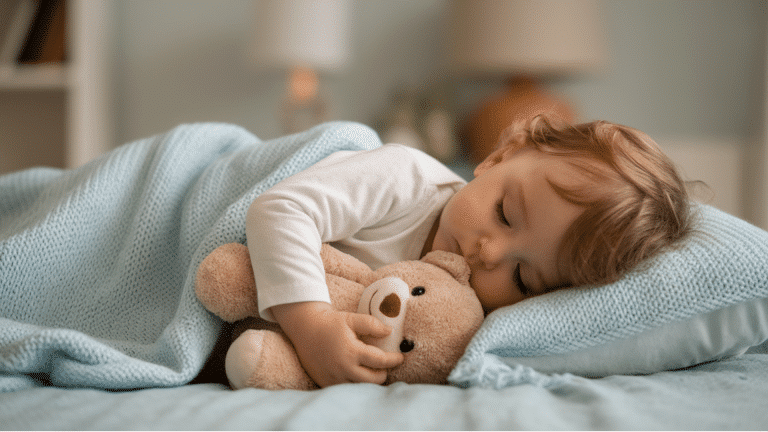Parents often have questions about comfort items for their babies’ sleep routines. A lovey—a small comfort object—is a common choice.
This practical guide will explain what parents should know about these comfort items, from safety considerations to the best times to start using them.
We’ll cover essential information to help you make informed choices about comfort objects for your little one’s sleep routine.
You’ll learn about selecting appropriate items, understanding when to begin using them, and following important safety guidelines.
By the end of this guide, you’ll have clear, practical knowledge to help create a secure sleep environment for your baby.
What Is a Lovey and Why Do Babies Love Them?
A lovey is any comfort object that helps your child feel secure and calm. Think of it as your baby’s special sleep companion.
While many parents picture traditional items like small blankets or
A lovey creates a sense of security when parents aren’t in the room, helps babies self-soothe during night wakings, and makes bedtime feel familiar and consistent.
A lovey supports emotional growth by building confidence in new situations, helping babies manage their feelings during changes, and encouraging them to learn how to calm themselves independently.
A lovey makes nap time easier in different places, helps in calming babies during doctor visits or new experiences, and provides comfort during travel.
When and How to Introduce a Lovey?
8-12 months, once babies can grasp and move objects safely. Every baby is different – watch for several of these signs together before introducing a lovey.
Signs Baby Is Ready
Physical Readiness: Your baby can roll over, grab things, push objects away from their face, and has good control of their head and hands. it can be-
- Pushes unwanted things away
- Has good head and neck control
- Shows hand-eye coordination when reaching for toys
Emotional Readiness: They show attachment by getting upset when you leave, seeking comfort, and having favorite toys. They also show interest in soft, cuddly items.
- Gets upset when you leave the room
- Looks for comfort when tired or upset
Development Readiness: Your baby understands that things exist even when out of sight, shows clear preferences, and can calm themselves a little. They also try to copy how you play with toys.
- Shows preference for certain toys or blankets
- Can self-soothe in small ways
Now, how Can You Introduce It to Your Baby?
- Start by incorporating it during daytime naps when you can supervise, allowing your baby to become familiar with it in a safe setting.
- Let your baby interact with the lovey during happy, calm moments, so they develop a positive attachment
- A great way to build an early connection is by placing the lovey between you and your baby during feeding or cuddle time so it absorbs your scent and becomes associated with comfort.
A helpful tip: Put the lovey in your shirt for a while before giving it to baby – this makes it smell like you, which can be comforting.
How to Select the Perfect Comfort Toy for Your Little One
What to Look for When Buying a Comfort Toy
- Stick to toys with simple designs and no removable parts
- Choose items that are machine washable and quick-drying
- Buy multiple copies as backups
- Avoid toys with batteries or electronic parts
- Select colors that are visible in low light
What Makes the Best Material
- Pick cotton or other soft, breathable fabrics
- Ensure the toy is lightweight for easy handling
- Focus on natural materials to prevent skin issues
- Check that fabric stays in good condition after washing
- Remove any rough tags or labels before giving to baby
Smart Tips for Parents
- Consider a combination toy with both blanket and plush features
- Look for varied textures that help baby’s sensory development
- Choose a size baby can easily grip and carry
- Buy multiple identical toys as spares
- Test durability by washing before committing to a specific toy
What If My Baby Doesn’t Attach to a Lovey?
First, stay calm – it’s perfectly normal! Every baby is different, and not every child needs a lovey. Here’s what you should know:
The most common reason can be that your baby might like comfort in other ways, like sucking their thumb or hugging a favorite blanket.
Your baby might just need more time before they’re ready, or they might prefer different textures and items than what you’ve offered. Many babies naturally develop their own ways to self-soothe without needing a specific comfort object.
What Are the Safety Guidelines for Loveys?
- Age Guidelines: For your baby’s safety, avoid putting any loveys in the crib before they turn one year old. When you start, only let them use the lovey during naps while you can watch them.
- Size and Design Safety: Choose a lovey that’s not too big – about 12 inches is perfect. Make sure it’s a simple design with no pieces that could come off.
- Cleaning and Care: Always wash a new lovey before giving it to your baby, then keep washing it weekly to keep it clean. It’s smart to have two of the same lovey so you can switch them out.
- Safe Sleep Rules: Keep the lovey away from your baby’s face during sleep. If your baby seems too warm, take the lovey away. Don’t use it along with other comfort items, and never attach it to pacifiers or clothing.
- Daily Safety Checks: Take a quick look at the lovey each day to check for wear and tear. Ensure all parts are firmly attached and there’s no fraying or damage.
Remember: Always put safety first, even if your baby loves their lovey. When in doubt, check with your pediatrician.
Conclusion: Loveys Are Great, But Not a Fix-All
Loveys can be wonderful comfort objects for many babies, helping them feel secure and learn to self-soothe.
But remember that every child is different – some take to loveys right away, others might prefer different comfort items, and some may not want one at all. That’s perfectly normal.
The key is following your baby’s lead while keeping safety in mind.
Start by watching for signs of readiness, choose a safe and suitable lovey, and introduce it gradually. If your baby doesn’t bond with a lovey, don’t worry.
” What matters most is creating a consistent, loving environment for your little one.”
Frequently Asked Question(FAQs)
Can Babies Suffocate on Lovey Blankets?
Yes, babies under 12 months can suffocate on loveys. Always follow safe sleep guidelines – no loose items in the crib until after their first birthday.
Is It Okay for A Baby to Sleep with A Stuffed Animal?
Don’t let your baby sleep with any soft objects, including stuffed animals, until they’re at least 12 months old.
What Age Can a Baby Sleep with A Cuddly?
For safety, wait until your baby is at least 12 months old before introducing any lovey or cuddly toy into their sleep space.

